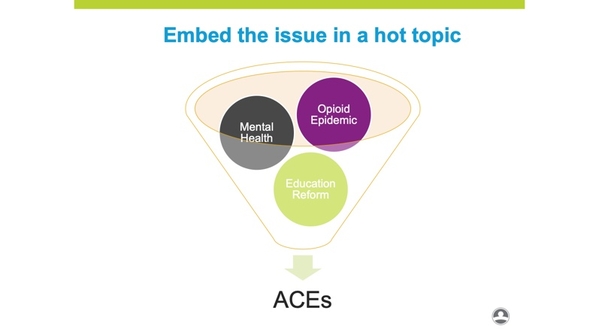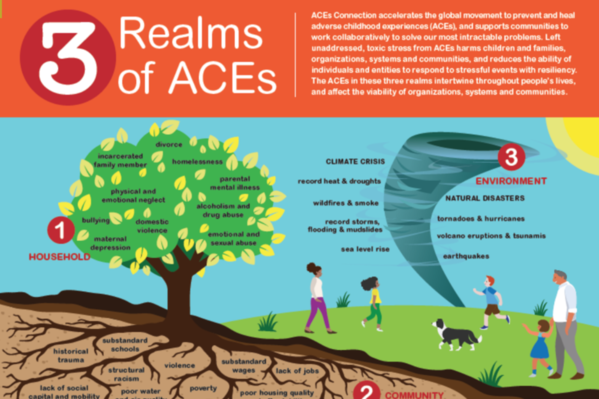New and returning lawmakers take the oath of office on day one of Washington state's 2017 legislative session. — Jeanie Lindsay/Northwest News Network
As advocates prepare to see how ACEs (adverse childhood experiences) science, trauma, and resilience play out in the 2020 state legislative sessions — many beginning in January — they are undoubtedly asking: “What does a legislator want?"
It may be a stretch to play on Freud’s question: “What does a women want?", but the query captures how communication among humans is often perplexing and fraught. Two studies released in 2019 shed some light on this question as it addresses state legislators’ perspectives and opinions on the science of adverse childhood experiences.
The lead authors of both studies — Jonathan Purtle of Drexel University and Aditi Srivastav of the Children’s Trust of South Carolina and the University of South Carolina — examine state legislators’ knowledge and views on ACEs science using different approaches. Purtle’s study is quantitative and surveys a national sample of legislators, while Srivastav’s is qualitative and queries South Carolina legislators. Both studies recognize the importance of state legislators’ views on the impact of ACEs because the policy decisions they make have a significant impact on preventing ACEs and building resilience.
The ultimate goal of the study by Purtle and his co-authors “was to provide an empirical foundation to inform how evidence about ACEs as risk factors for behavioral health conditions can be more effectively disseminated to state legislators.” While some research has been done about how to communicate evidence about early childhood (e.g., research by FrameWorks Institute focuses on a public audience and other studies examine views of primary care providers), Purtle's study aims to address the lack of research on attitudes of policymakers with “the ultimate goal of maximizing the persuasive power of the messages…” This suggests ”the need to tailor evidence summaries for legislators” on the basis of characteristics such as political party, ideology, and gender. The authors conclude that there is a "need for research that examines the effects of various ways of framing evidence on opinions about ACEs and how ideology moderates message effects.”
The Purtle study asks about how four ACEs (childhood sexual abuse, physical abuse, witnessing domestic violence, and childhood neglect) “increase a person’s risk of developing a mental illness or substance use disorder as an adult.” The focus on mental health and substance use rather than overall physical and mental health in adulthood is because the research was part of a larger study that focused on behavioral health. Asking about all 10 ACEs wasn't possible the survey would have been too long.
Participants were asked specifically if they knew about the ACE Study. The majority (67%) said "no" or "not sure". Liberals and moderates were found to have considerably higher levels of knowledge about the ACE Study than conservatives. Since the survey was conducted in 2017, knowledge of the ACE Study has undoubtedly increased in the interim, but the need for basic education is still high, especially among conservatives.
Other highlights as summarized in the study include:
—A survey of U.S. state legislators found that 77% identified childhood sexual abuse as a major risk factor for adult behavioral health conditions, 59% identified childhood physical abuse, 39% identified witnessing domestic violence as a child, and 38% identified childhood neglect.
—The proportion of legislators who identified each adverse childhood experience (ACE) as a major risk factor for adult behavioral health conditions was significantly higher among Democrats than among Republicans, among liberals than among conservatives, and among women than among men.
—Many state legislators were unaware of or unpersuaded by evidence about the extent to which ACEs influence risk of adult behavioral health conditions, especially the experiences of witnessing domestic violence and childhood neglect. (The authors found this finding “troubling” since witnessing domestic violence accounts for a considerably higher burden of mood, anxiety, and substance use disorders than physical abuse, and childhood neglect is strongly associated with risk of adult behavioral health conditions.)
The study found the largest differences were between liberal and conservative legislators: “The proportions of liberal legislators who identified witnessing domestic violence and childhood neglect as major risk factors for adult behavioral health conditions were nearly twice those of conservative legislators…” The authors concluded: “Our study highlights the importance of increasing legislators’ knowledge about the potential severity of these ACEs as well as interventions that can prevent exposure and mitigate their consequences.”
The authors concluded that “researchers and advocates might consider developing multiple versions of ACE evidence summaries that are tailored on the basis of these characteristics” [e.g., liberal vs. conservative]. Summaries for Republicans/conservatives, for example, might be more persuasive if they emphasis the economic costs of ACEs and how policies can “enhance resilience to ACEs instead of emphasizing the possible neurobiological effects of ACEs.”
South Carolina Study
The South Carolina study — Addressing health and well-being through state policy: understanding barriers and opportunities for policymaking to prevent adverse childhood experiences (ACEs) in South Carolina — comprised interviews with 24 state legislators conducted in 2018. Participants were diverse, reflecting the make-up of the legislature in terms of party, region, gender, race, and House and Senate.
In a November meeting of the American Public Health Association (APHA), Srivastav summarized the purpose of the study:
- This study sought to understand barriers and opportunities for policies and program creation and implementation
- Used the perspectives of state legislators to build insight on state advocacy strategies for ACEs
- Focused on understanding how to best communicate research and data surrounding complex topics in public health while pushing forward ACE policies
She reported that legislators have a general understanding of ACEs science and recognize the intergenerational component of ACEs, but they do not see the link between ACEs and long term health outcomes. To get legislators to care about ACEs science as a policy issue, she suggests using terms childhood trauma and ACEs strategically. The term “childhood trauma” was found to be more serious and urgent than adverse childhood experiences but “ACEs frames the issue as something that affects many children instead of a certain population or group, possibly increasing its significance.”
 The study findings suggest the importance of making ACEs a solvable policy problem with legislators recommending several options that advocates should consider: 1) talking about ACEs and a health outcome that has a pressing need to be addressed, 2) focusing on the link between ACEs and cost, or 3) highlighting how ACEs relate to a core function of government (e.g., child protective services). It is also important to embed the issue in a hot topic such as mental health, the opioid epidemic, and education reform. The findings suggest that prevention cannot be the main argument.
The study findings suggest the importance of making ACEs a solvable policy problem with legislators recommending several options that advocates should consider: 1) talking about ACEs and a health outcome that has a pressing need to be addressed, 2) focusing on the link between ACEs and cost, or 3) highlighting how ACEs relate to a core function of government (e.g., child protective services). It is also important to embed the issue in a hot topic such as mental health, the opioid epidemic, and education reform. The findings suggest that prevention cannot be the main argument.
The study found that stories, in addition to data and research, were important to legislators in the presentation of policy options. Several legislators said they “were more likely to listen to stories that came from within their district about the effects of ACEs” than traditional policy advocacy strategies such as policy briefs or one-pagers. Others suggested presenting data and research in the form of policy briefs was important. The source of the data analysis (e.g., their own staff, experts, legislative committee staff, fellow legislators) affected the trust placed in the information by legislators.
In the context of framing ACEs as a measurable and solvable issue in public health, the authors discussed how there is the focus on interpersonal causes of ACEs and lack of awareness of the social, environmental, and political factors that can influence early childhood experiences. They suggested that as ACEs increasingly include community conditions, these definitions can be used to better describe “the role of policy and other macro-level influences in addressing ACEs.”
Both studies, which are attached to this post, conclude that more research is needed on advocacy messages to translate ACEs science into policy action.






Comments (5)